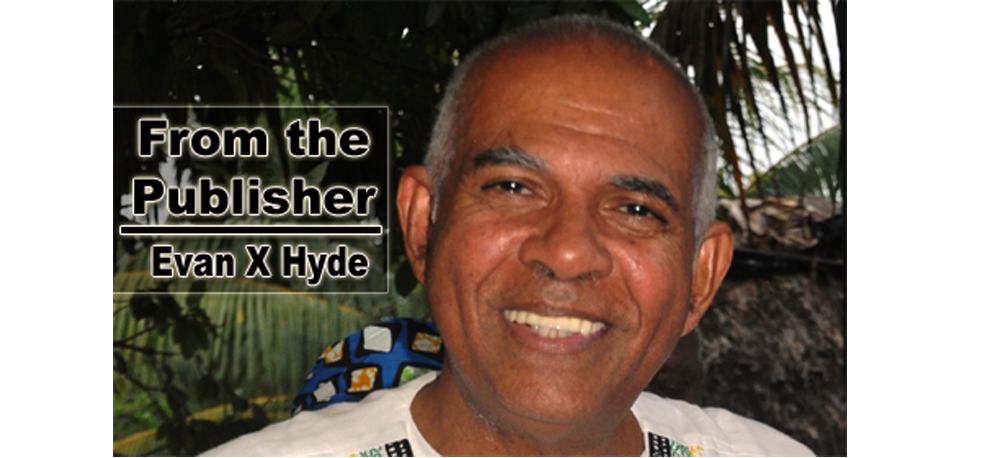Ivan Duran’s and Bilal Morris’ “Belize Music Project” has brought back so many memories that it would take several columns for me to do justice to some of said memories.
In the first place, you must understand that Hurricane Hattie in 1961 changed Belize Town/City immeasurably in the social sense, because there was no electricity for three or four months. The darkness increased the sexual vibes, apart from the fact that the young ladies had fewer clothes, were more scantily attired, if I may put it that way.
Lord Gerald Rhaburn released his classic TROPICO Y RITMO album (recorded in Guatemala) in 1962, and it took Belize by storm. I remember attending parties at the old Princess Royal Youth Hostel building where Rhaburn’s album was featured. Rhaburn ruled Belize in the 1960s, of course, and then he began to travel to New York and bring down the house over there.
(The Messengers took over roots Belize around 1966/1967, but they will need a separate, special column.)
Around 1963, 1964, two distinct social groups emerged amongst the city’s teenaged generation. These were “The Righteous Brothers” on North Front Street, mainly Creole, and the Castaneda sisters on Daly Street, which was a more Mestizo and middle-class Creole scene. At these teenaged parties, the music was by record player, I believe. (I can’t say when sound systems emerged in Belize.)
Riverside Hall, at the corner of North Front Street and Victoria Street, had ruled adult dancing in the city from before I knew myself. There was a time when dances were held by invitation, would you believe? In other words, your money was no good: you had to have been invited by the organizer/promoters to enter the majestic Riverside.
In my adult years, when this discriminatory practice had faded, I witnessed several scenes where brothers would get angry if a sister refused to dance with them. The brother would remark angrily on the fact that he had paid his money to dance, which is reasonable enough if you think about it. At the same time, you have to allow for a sister’s right of refusal.
A few months ago, I criticized Professor Iyo’s recent book’s reference to the UBAD organization as “naive.” But it is for sure that when UBAD went political in August of 1970, it was a totally naive move, because political parties must have steady financiers. In UBAD’s heyday, we raised money mainly by having dances; we had no financiers, steady or otherwise.
We had good luck with these parties and dances in the beginning, but sank most of the money into a bakery project on Dean Street (Peters Bakery). I don’t believe Charles X Eagan was totally honest, and the bakery project, very successful in the beginning, soon faded.
I’ve always thought that the Harmonettes began to organize and practise in Turton’s Alley around the same time UBAD began to blossom in 1969. I never got the chance to compare notes with the Harmonettes’ leader/founder, Mr. Bert Nicholas, because he died at an early age, of kidney disease.
It is for sure that the Harmonettes began to rule Belize City in 1970/71 amongst the Creole population, while Jesus Acosta’s Professionals absolutely dominated the Mestizos. So that, it seemed to me in 1972 that if one could put the Harmonettes and the Professionals together on a Saturday night, we would control the whole bligging city.
Very few people came to the dance at Imperial Hall, however, and I believe I learned a lesson: Creole and Mestizo people live and even love together, but they don’t really want to socialize together publicly.
A dance that crashes is a major disaster, because you have to remember that the musicians are depending on their after-dance pay to balance their individual budgets. As a struggling promoter, I had no savings or nest egg to ease their pain, but I can remember only one musician, an old schoolmate from the Professionals, who complained so that I could hear. I could understand.
The Harmonettes went from success to success, especially at Bird’s Isle during the heyday of the softball (“golden”) girls in the mid-1970s.
I will try to recall the musicians as best I can. Steeno played drums; I don’t know his name. Daniel Bennett was on trumpet, I believe (although I initially was thinking that he played bass guitar), while the great Bucko Cadle starred on rhythm guitar. The musically famous McGregor family, a father and two sons, were the core of the band. The dad’s name was Godfrey McGregor, while one son whom we called Majely, played saxophone, and another played guitar. Mr. Nicholas was a saxophonist. For the life of me, I can’t remember what instrument Mr. Godfrey played. The vocalists were Anthony “Cheapy” Richards, who became a sensational star, and Anthony “Supa” Jones, who just vanished from the scene one day, and has not been heard of since. I have heard one or two people say he went to Mexico.
My sense was that after Mr. Bert died, the Harmonettes, featuring the McGregor family, metamorphosed into “Bamiki Bandula” under the leadership of Dickie Straughan, a saxophonist. By this time, UBAD was long dead and my personal party days were over, so Bamiki’s story is for someone else to tell.
In closing, I would say that I have not heard Tony Wright’s name called, and I would say that he is the Belizean who has done more to keep Belizean music history alive than any other. Big, big respect, Antonio.

